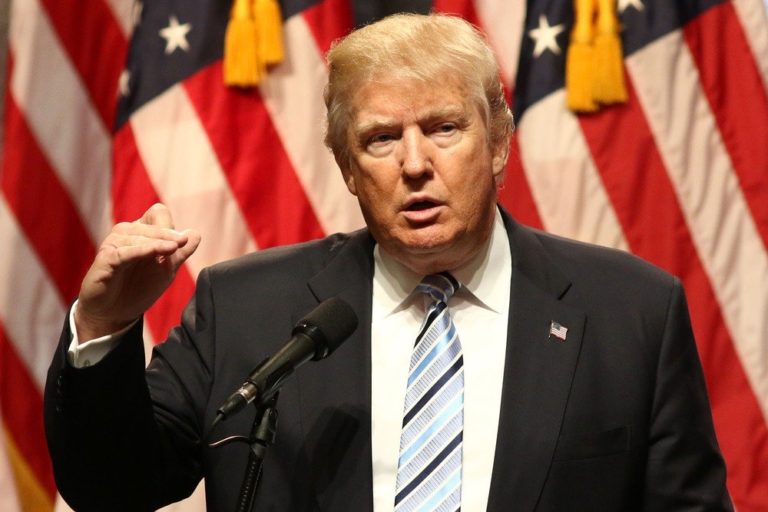Promising Change: Examining Trump’s Unfulfilled Election Promises
Here’s a look at the promises Donald Trump made during his 2024 campaign and how closely they’ve been followed. We track his legislative actions against the Heritage’s Project 2025 plan.
Key Takeaways
- Trump significantly changed course, targeting the Affordable Care Act (Obamacare) early in his term.
- Over 200 specific pledges from his 2024 campaign were documented.
- Many Republican officials attributed legislative successes to Trump’s support.
- However, the rollout of health insurance marketplaces remained plagued by technical difficulties despite a shift away from Obamacare.
- Repealing the Affordable Care Act remains a central goal, joining a long list of broken campaign promises from Trump’s political career.
Trump kept talking, but the public wonders: Did his election pledges actually happen? Or are they another forgotten campaign slogan? While President Donald Trump’s 2024 campaign focused heavily on restoring America’s power and prosperity, much remains unfulfilled. Tracking his specific promises, which often overlapped with the Heritage Foundation’s Project 2025 blueprint, has shown mixed results.
This analysis revisits Trump’s most prominent 2024 campaign commitments and examines what has and hasn’t happened. The journey hasn’t been simple.
The government started early concentrating on the Affordable Care Act, or Obamacare. Before taking office, President Trump promised major changes to the healthcare law. This plan got immediate support from many Republicans. Lawmakers tried a two-part approach.
First, they pushed for law changes that would let people keep their existing insurance. Second, they aimed for an official government end to Obamacare, essentially letting it expire. But achieving either goal proved tricky. The change started even before the official launch period, making it unusual. Effects became noticeable almost instantly for some policies, like reducing the penalty for skipping health insurance.
Despite early wins, many long-sought-after Trump promises from his platform are still waiting. These include actions related to border security, trade policies, environmental regulations, financial reforms, and more. Supporters see legislative progress, while critics point to stalling major initiatives and continued reliance on executive actions.
Let’s look at some of the main campaign pledges and what has happened recently.
The New Focus: Challenging Obamacare
From day one, President Trump radically shifted attention towards the Affordable Care Act. His actions contradicted his predecessor. The administration viewed the healthcare law as intruding on presidential power.
In the first days, officials sent a clear message: They wanted to “veto” the law from the executive branch, beginning even before its required implementation period started. This step was politically risky but constitutionally possible.
This change didn’t come from nothing. It aligned with campaign rhetoric promising relief from burdensome regulations. Lawmakers reacted quickly, proposing bills focused on the two-step replacement strategy: Saving current plans while moving towards a potential official end to the law.
Significant early achievements appeared. Lawmakers successfully changed taxes, reduced user fees, allowed more import competition, eliminated an infrastructure tax extending into 2026, and reduced company debts. Actions culminated in a landmark vote to dismantle the Affordable Care Act’s subsidies and penalties.
However, the healthcare law’s official demise has yet to trigger troubled online marketplaces where people buy health insurance. Despite constant government signals about letting the law expire, these online shops kept running. People desperately needing new insurance couldn’t rely on them, even with new subsidy rules.
The promise of replacing Obamacare hasn’t turned out as smoothly as replacing specific regulations or corporate taxes. There is a clear pivot, but making the change feel real requires more than legislative changes.
Following the Project 2025 Plan?
Many people followed President Trump’s public statements and official actions. They believed he was moving towards the conservative blueprint, Project 2025, crafted by the Heritage Foundation.
The list included about 200 specific pledges, covering nearly every government action. Many were bold ideas, like potentially eliminating scores of federal agencies. Others targeted famous regulations like tough climate rules, trying to scrap limits on carbon dioxide pollution affecting many industries.
Tracking these required watching bills, actions, and presidential orders. By mid-year, a review shows clear steps on some issues. For example, lawmakers promptly reduced regulatory burdens in several areas, promoting business growth by cutting red tape.
Lawmakers also took executive actions to signal a new direction within the first weeks. They ended safety rules for a specific natural gas pipeline type, potentially opening doors for faster funding for related projects. New guidance for student loans allowed some borrowers a faster path to forgiveness.
Also, government efforts pushed for corporate savings and tax cuts. Large financial firms like insurance companies saw their approved fees decrease significantly. The impact was almost immediate and spelled out in official documents.
But other major Project 2025 goals faced delays or even roadblocks.
Attempts to relax environmental limits faced continued legal battles from the start. Even some of the administration’s draft recommendations raised concerns, with worries about national forests feeling like a compromise. Key goals like possibly canceling landmark environmental reviews or eliminating protections for vital species seemed stalled long before June.
Moving large government parts, like cutting agency heads or dozens of buildings, proved harder than simply cutting funding. It required approvals almost as difficult as starting from scratch. The change in leadership, especially among low-level officials usually loyal to the old system, required changes itself.
The Economics Thread
Mr. Trump repeatedly stressed economic transformation: tax relief, dissolving red tape for businesses, and a massive government cut.
- Tax Relief: Lawmakers focused early on cuts. They eliminated various business taxes, boosted production taxes. Importers rejoiced at slashed wine tariffs. A construction goods tax cut passed late in the year added up for many industry leaders. These changes aimed to increase company earnings.
- Simplifying Business: Rules change, effectively adding more loopholes than outright elimination in some cases. Treasury guidance signaled a shift on financial dealings. The Treasury department used a fast internal review on rules about special company ownership. Announcements opened paths for more complex financial transactions. Seeking permission to expand diverse benefits policies involved significant decisions.
- Government Spending Limits: Lawmakers acted early, asking for scaling back government programs across the board. They explicitly rejected some cost estimates. Agencies received early budget forecasts, forcing rework. Overall spending limits cut billions, aiming to shrink government size beyond the proposed Project 2025 target. A specific budget blueprint for the coming years fell short of a key scorekeeping goal.
- Protecting Resources: A law tried to allow states more control over water rules, an idea dating back a decade. Particular attention went to mineral rights held by public lands, a policy connected to lowering energy costs. Proposals still aimed at cutting farm program spending required approvals in other parts of the government.
Unfulfilled Dreams: Getting Things Done Differently
Some of the clearest promises needed different government procedures, which proved slow-moving or beyond reach.
- Starting an “Aggressive” Border Plan: An early attempt to build a physical barrier hit technical issues. Records needed for construction licenses were missing or incorrect. This setback worried many elected leaders. Work started on other border security ideas, aiming to use drops instead of standard fencing for sections. Efforts often got delayed, with funding problems popping up repeatedly. The overall project to update border security tools faced delays not just in physical work, but in getting the necessary equipment to Mexico and then to the actual project area.
- Regulatory Cuts Under New Rules: New governing bodies tried to change regulations fast. They announced actions to potentially cancel hundreds of rules, often with speed. But the full effect hasn’t reflected a massive rollback yet. The pace sometimes hit speed bumps from other government offices needing time. The gap between saying “no more” regulations and actually removing them remains large. Some changes, like updating banking rules, still feel stuck at their original points years after a new president started.
- Canceling Environmental Regulations: Efforts consistently pushed against terrain management laws. Initial documents contained mangled facts requiring fixes. Meetings and money trouble plans meant firing millions of normal workers seemed near-impossible. Getting past the starting line is slow, even though official signals continue talking about land blocks changes.
- Repealing Key Policies: Trying to stop important previous actions remained elusive. Officials couldn’t resolve the problem of ending a large health insurance online store. The core taxes, which the previous administration increased immensely, still stand. Repealing these critical taxes showed fundamental disagreement from earlier government branches.
More Than Just Laws: Personal Vows
Beyond legislative actions tracking public input, President Trump also expressed personal ideas during the campaign season. These included boosting freedom rules for daily life, cutting taxes, aiming new policies, suggesting new natural resources projects, and sharing thoughts on foreign leaders.
Many views criticized previous American choices outside the law. Campaign messaging often blamed past presidents, so conditions like federal school testing remained the same. Campaign signals sometimes didn’t clarify details needed for action. Separating what he said as President Trump from what he suggested as a candidate remains complex.
A Different Kind of Year?
The start of this presidency unfolded unusually from the beginning. Unlike earlier transitions, there was immediate legal action.
This pushed public focus beyond the main promised agenda. Efforts have yet to achieve the broad structural changes early policy tracking listed. A lot that needs doing has simply shifted into future plans. The truth lies somewhere in between: significant shifts happened, but widespread action remains incomplete.
What Happens Next?
Keeping promises requires time, political agreement, and overcoming bureaucratic hurdles. Looking ahead, core efforts likely continue: working on American choices, possibly ending the health care law itself, and challenging international deals like the climate or farming supports. These basic promises imply major choices unless official projects change course again soon.
The commitments differ, focusing on rules and funding. Wolf initiatives adapted quickly. Overall, President Trump kept many options open throughout 2025. But turning potential into reality consistently proved a more complicated assignment than initially thought.










